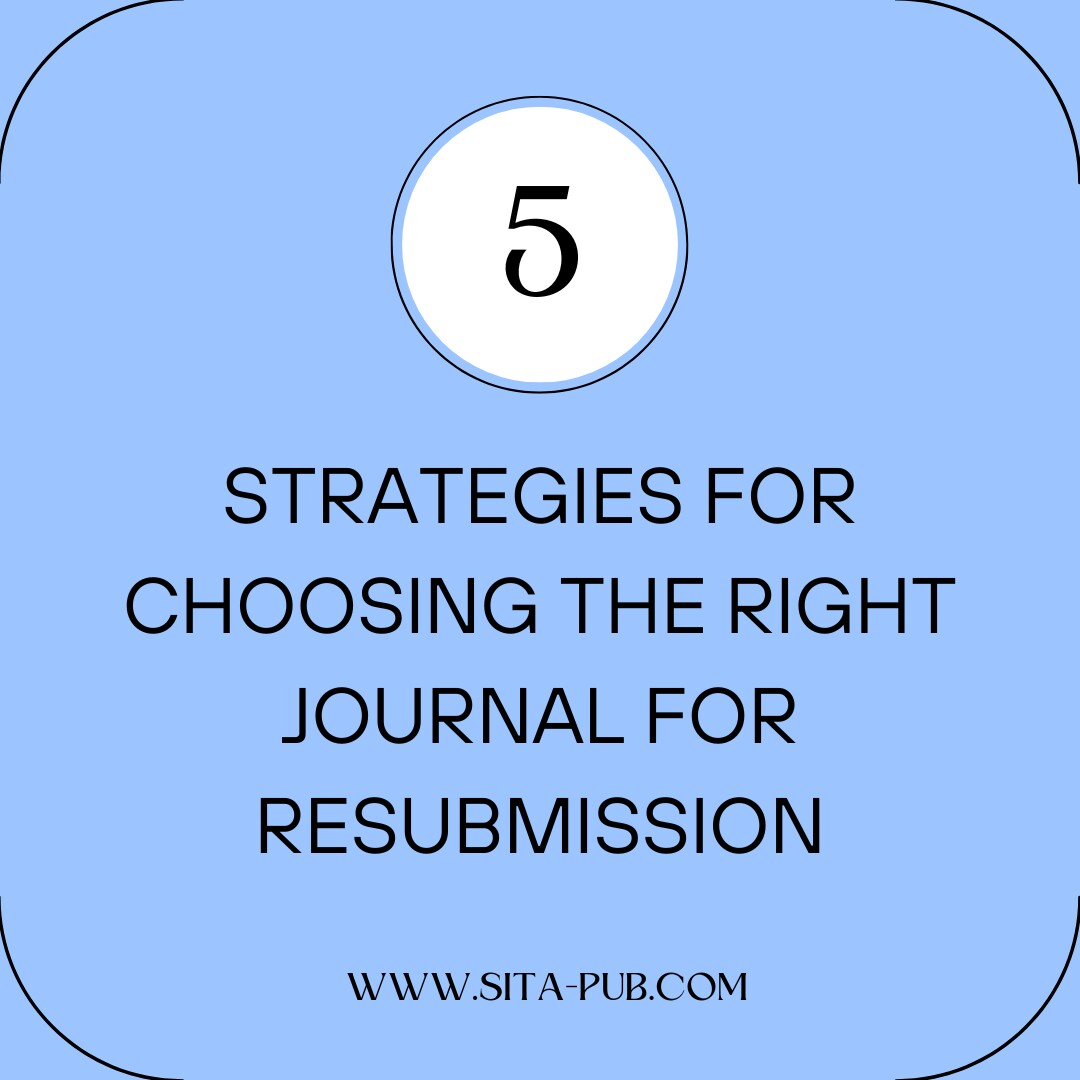5 Strategies for Choosing the Right Journal for Resubmission


Choosing the right journal for research paper submission is important for its success. After receiving feedback or a rejection from a previous journal, you need to carefully select a new one. Here are some clear strategies to help you make the best choice.

The first step is to use journal finder tools. These online tools can help you find a suitable journal for your research. You simply enter your paper’s title, abstract, and keywords, and the tool will suggest journals that match your work. Some popular journal finder tools include:
Elsevier Journal Finder: This tool helps you discover journals based on your research details.
Springer Journal Suggester: Similar to Elsevier, it analyzes your manuscript to find relevant journals.
JournalGuide: This resource offers a wide database of journals, allowing you to filter by subject area.
Using these tools can save you time and provide a list of peer-reviewed journals that are likely a good fit for your paper. However, after getting suggestions, you should still research each journal to ensure it fits your needs.

Once you have a list of potential journals, the next step is to read their journal aims and scope. This information tells you what topics the journal covers and the types of articles it publishes. Understanding this is essential to see if your research fits.
Aims: Look for statements that explain the journal’s mission and what it hopes to achieve. This helps you understand the journal's focus.
Scope: This section provides details on the specific subjects and methodologies the journal is interested in. Make sure your research aligns with these topics to increase the chances of acceptance.
By reviewing the aims and scope, you can avoid submitting to journals that do not support your area of research.

Next, consider who reads the journal. Different journals have different research audiences, such as academics, practitioners, or the general public. To understand the readership:
Review Past Issues: Look at the articles published in previous issues. This can show you what topics and types of research the journal favors.
Consider the Discipline: Ensure that the journal’s audience matches your field of study. For example, if your research is practical, a journal aimed at practitioners may be a better fit than one focused only on academic theory.
By analyzing the target audience, you can make sure your research reaches the right people.

Journal metrics provide useful information about a journal’s reputation and journal acceptance rate. Metrics such as impact factor, h-index, and acceptance rate can help you decide.
Impact Factor: This number reflects the average citations of articles published in the journal. A higher impact factor of journals often means a more respected journal, but it’s important to consider your research context.
Acceptance Rate: This metric shows how many papers the journal accepts compared to how many it receives. Journals with lower acceptance rates are more selective. If your last submission was rejected, consider targeting journals with slightly higher acceptance rates to improve your chances.
While metrics are important, they should not be the only reason for your choice. A journal with a lower impact factor might still be a good fit if it aligns well with your research.

After you have evaluated the journals based on the above criteria, it’s time to make your final choice. Here are some tips to help you select the best journal for resubmission:
Balance Quality and Fit: While it’s tempting to aim for high-impact journals, ensure that your research fits the journal’s aims and audience. A good fit can be more important than prestige.
Consult Colleagues: Talk to colleagues or mentors who have experience in your field. They may offer helpful insights about which journals are reputable and suitable.
Consider Publication Speed: If it is important for your research to be published quickly, check how long the journal usually takes to publish accepted papers.
Read Author Guidelines: Before making your final decision, carefully read the journal’s author guidelines. This will show you the submission requirements, formatting rules, and any specific instructions you need to follow.
Choosing the right journal for resubmission is a crucial step in the academic publishing process. By using journal finder tools, checking the aims and scope, analyzing readership, evaluating journal metrics, and carefully selecting the most appropriate journal, you can improve your chances of acceptance. Additionally, understanding publication strategies and the manuscript submission process will benefit your research visibility. Taking the time to research and consider all relevant factors will lead to a more successful publication experience. Good luck with your resubmission!

If you have any questions, inquiries, or would like to learn more about our services, please don't hesitate to reach out to us. Our dedicated team is ready to assist you.